Related Research Articles

Louis Comfort Tiffany was an American artist and designer who worked in the decorative arts and is best known for his work in stained glass. He is the American artist most associated with the Art Nouveau and Aesthetic movements. He was affiliated with a prestigious collaborative of designers known as the Associated Artists, which included Lockwood de Forest, Candace Wheeler, and Samuel Colman. Tiffany designed stained glass windows and lamps, glass mosaics, blown glass, ceramics, jewellery, enamels, and metalwork. He was the first design director at his family company, Tiffany & Co., founded by his father Charles Lewis Tiffany.

Stained glass is coloured glass as a material or works created from it. Throughout its thousand-year history, the term has been applied almost exclusively to the windows of churches and other significant religious buildings. Although traditionally made in flat panels and used as windows, the creations of modern stained glass artists also include three-dimensional structures and sculpture. Modern vernacular usage has often extended the term "stained glass" to include domestic lead light and objets d'art created from foil glasswork exemplified in the famous lamps of Louis Comfort Tiffany.

John La Farge was an American artist whose career spanned illustration, murals, interior design, painting, and popular books on his Asian travels and other art-related topics. La Farge made stained glass windows, mainly for churches on the American east coast, beginning with a large commission for Henry Hobson Richardson's Trinity Church in Boston in 1878, and continuing for thirty years. La Farge designed stained glass as an artist, as a specialist in color, and as a technical innovator, holding a patent granted in 1880 for superimposing panes of glass. That patent would be key in his dispute with contemporary and rival Louis Comfort Tiffany.
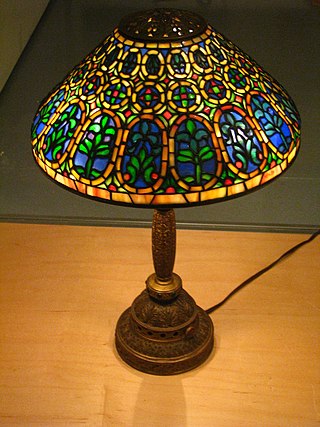
A Tiffany lamp is a type of lamp with a camed glass shade designed by Louis Comfort Tiffany or colleagues, and made in his design studio. The glass in the lampshades is put together with the copper-foil technique instead of leaded, the classic technique for stained-glass windows. Tiffany lamps are considered part of the Art Nouveau movement. Considerable numbers of designs were produced from 1893 onwards.

A revival of the art and craft of stained-glass window manufacture took place in early 19th-century Britain, beginning with an armorial window created by Thomas Willement in 1811–12. The revival led to stained-glass windows becoming such a common and popular form of coloured pictorial representation that many thousands of people, most of whom would never commission or purchase a painting, contributed to the commission and purchase of stained-glass windows for their parish church.

Clayton and Bell was one of the most prolific and proficient British workshops of stained-glass windows during the latter half of the 19th century and early 20th century. The partners were John Richard Clayton (1827–1913) and Alfred Bell (1832–1895). The company was founded in 1855 and continued until 1993. Their windows are found throughout the United Kingdom, in the United States, Canada, Australia and New Zealand.
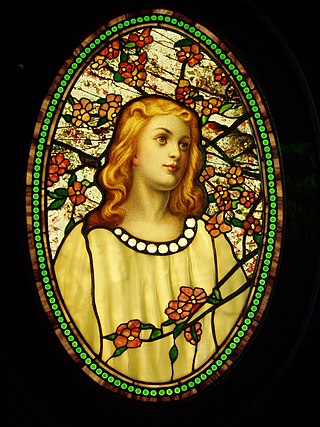
Tiffany glass refers to the many and varied types of glass developed and produced from 1878 to 1933 at the Tiffany Studios in New York City, by Louis Comfort Tiffany and a team of other designers, including Clara Driscoll, Agnes F. Northrop, and Frederick Wilson.
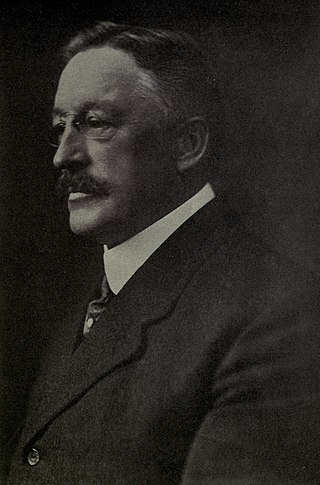
Joseph Burr Tiffany was an American interior designer of the late 19th century, today best known for his 1889 decoration of the first floor of Wilderstein, the Rhinebeck, New York home of the Suckley family. His firm, J.B. Tiffany and Co., was active from 1888-1891.
Brown Memorial Park Avenue Presbyterian Church of Baltimore, Maryland, U.S., is a large, Gothic Revival-style church built in 1870 and located at Park Avenue and Lafayette Avenue in the city's Bolton Hill neighborhood. Named in memory of a 19th-century Baltimore financier, the ornate church is noted for its exquisite stained glass windows by renowned artist Louis Comfort Tiffany, soaring vaulted ceiling, and the prominent persons associated with its history. Maltbie Babcock, who was the church's pastor 1887–1900, wrote the familiar hymn, This is My Father's World. Storied virtuoso concert performer Virgil Fox was organist at Brown Memorial early in his career (1936–1946).
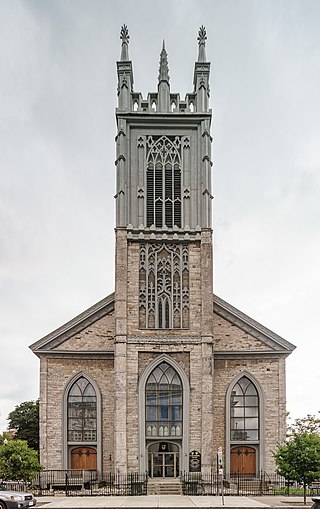
St. Paul's Episcopal Church in Troy, New York, United States, is located at Third and State streets. It is home to one of the oldest congregations in the city. In 1979, the church and two outbuildings were added to the National Register of Historic Places. Seven years later, when the Central Troy Historic District was created and added to the Register, it was listed as a contributing property.

Donald MacDonald (1841–1916) was a leading stained glass artisan and designer in 19th century Boston. Born Donald McDonald, he altered the spelling of his surname to "MacDonald" around 1877.

William Willet was an American portrait painter, muralist, stained glass designer, studio owner and writer. An early proponent of the Gothic Revival and active in the "Early School" of American stained glass, he founded the Willet Stained Glass and Decorating Company, a stained glass studio, with his wife Anne Lee Willet, in protest against the opalescent pictorial windows which were the rage at the turn of the twentieth century.
Daniel Cottier (1838–1891) was a British artist and designer born in Anderston, Glasgow, Scotland. His work was said to be influenced by the writing of John Ruskin, the paintings of the Dante Gabriel Rossetti and the work of William Morris. He painted allegorical figures in the Pre-Raphaelite style of Rossetti and Sir Edward Burne-Jones. Cottier is considered to be an important influence on Louis Comfort Tiffany and also is credited with introducing the Aesthetic movement to America and Australia.
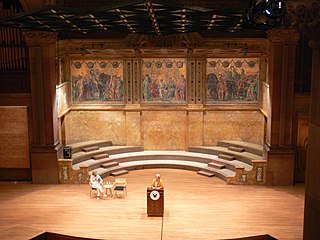
Jacob Adolphus Holzer (1858–1938) was a Swiss-born designer, muralist, mosaicist, interior designer, and sculptor who was associated with both John La Farge and Augustus Saint-Gaudens before he left to direct the mosaic workshops of Louis Comfort Tiffany, where he was preceded by his friend from La Farge's studio, the German immigrant Joseph Lauber (1855—1948). Holzer worked with Tiffany until 1898.

Grace and Holy Trinity Cathedral is an Episcopal cathedral in the Quality Hill neighborhood of downtown Kansas City, Missouri, United States. It is the seat of the Episcopal Diocese of West Missouri.
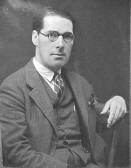
James Humphries Hogan RDI FSGT FRS was an English stained glass designer with the firm of James Powell and Sons throughout his career, rising from apprentice to be managing director of the company. He made magnificent stained glass for many of England's cathedrals, including the 100 feet high central windows of Liverpool Cathedral.

Frederick Wilson was a British stained glass artist best known for his work with Tiffany Studios. He was a prominent designer of ecclesiastical windows in the United States during the late 19th and early 20th centuries.

The Eydam and Handel Company, or Adolph Eydam and Philip Handel Company, was formed in 1885, until partnership broke up in 1892 when Eydam moved to rival company of C. F. Monroe. It was formed in Meriden, Connecticut, and over the years produced lamps and glass designs. The company was incorporated in 1903. As of c. 1911, P. J. Handel was president and treasurer of the business. In Meriden Illustrated, "[The company has] obtained [a] national reputation for the artistic and the high quality of their product. A number of patents are controlled which makes their business a very successful one. There is a force of 125 people skilled in the various branches and steadily engaged." Also at this time, the Handel Company maintained a showroom in New York City at the corner of West Broadway and Murray St. with dedicated sales agents for the entire United States. The production location was in Meriden on East Main Street, just east of Broad Street.

Art Nouveau glass is fine glass in the Art Nouveau style. Typically the forms are undulating, sinuous and colorful art, usually inspired by natural forms. Pieces are generally larger than drinking glasses, and decorative rather than practical, other than for use as vases and lighting fittings; there is little tableware. Prominently makers, from the 1890s onwards, are in France René Lalique, Emile Gallé and the Daum brothers, the American Louis Comfort Tiffany, Christopher Dresser in Scotland and England, and Friedrich Zitzman, Karl Koepping and Max Ritter von Spaun in Germany. Art Nouveau glass included decorative objects, vases, lamps, and stained glass windows. It was usually made by hand, and was usually colored with metal oxides while in a molten state in a furnace.
References
- ↑ Much of the content of this article is the product of original research for a forthcoming book, The Glorious Masterworks of Grace and Holy Trinity Cathedral, Kansas City, Missouri, by Randal J. Loy; some material and facts are also found in articles and books authored by Martin M. May (Great Art Glass Lamps: Tiffany, Duffner & Kimberly, Pairpoint, and Handel), and Paul Crist (Mosaic Shades, Volume 2)